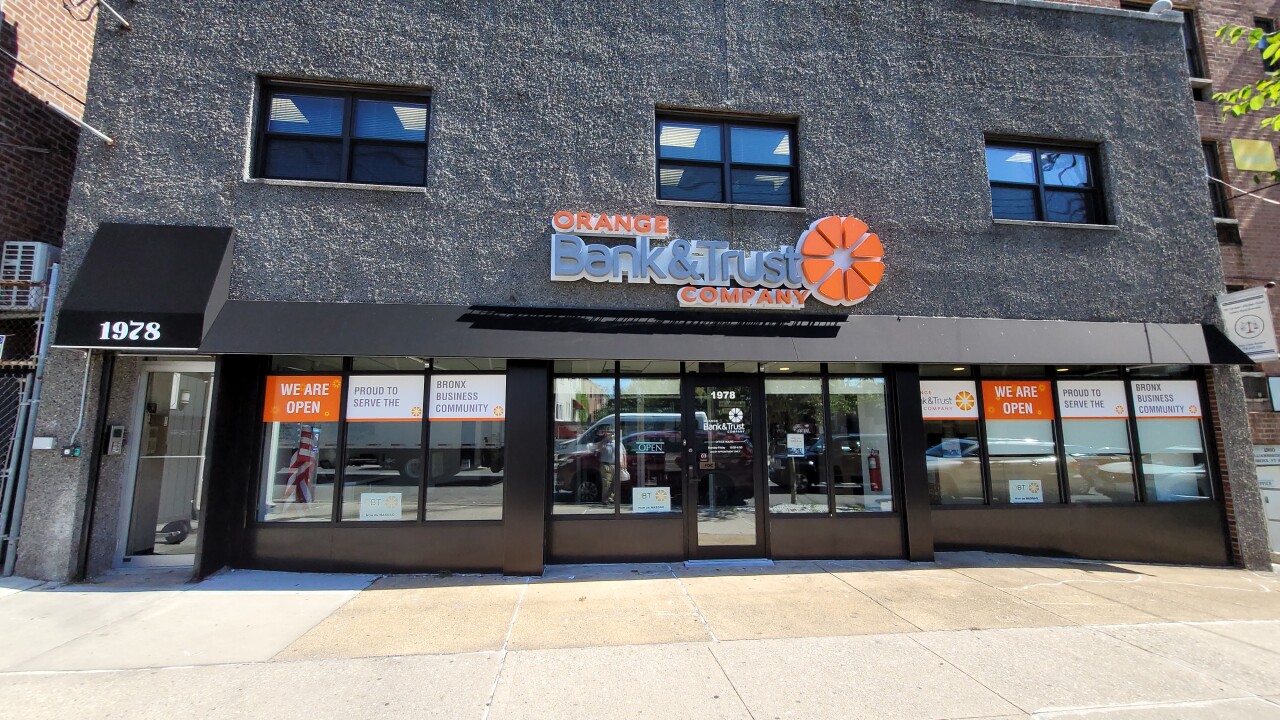The share of
This study comes out weeks after
"Higher interest rates on mortgages have led borrowers to pay upfront fees to lower their interest payments," said CFPB Director Rohit Chopra, in a press release. "The heavy use of 'discount points' suggests that many borrowers are uncertain about their ability to refinance in the future."
In that March 8 blog, the CFPB pointed to the rising cost of discount points. "These points may not always save borrowers money, however, and may indeed add to borrowers' costs. The CFPB is continuing to monitor market trends in this area," that post.
But there's a difference between the two concepts, said Scott Olson, executive director of the Community Home Lenders of America, which has been supportive of the CFPB taking on junk fees.
"Discount points are not 'junk fees.' They are explicitly permitted under Dodd-Frank, and as [Chopra] himself states: 'Higher interest rates on mortgages have led borrowers to pay upfront fees to lower their interest payments,'" Olson said.
They can be of tremendous value for the borrower, as the trade-off is that they get a lower mortgage rate and lower payments, especially if they hold on to the loan for a long-time, he said.
"Use of discount fees did increase in the last few years, but that was primarily due to market factors as mortgage rates skyrocketed," Olson noted.
Permanent rate buydowns might not make economic sense for the borrower as the difference in savings
The Bureau's analysis does not include temporary buydowns, nor does it distinguish between points paid by the buyer versus those that are covered by a third party, a CFPB spokesperson said in an emailed response.
It recognizes that the calculus changes based on whether the discount points are paid by a seller or builder, the CFPB spokesperson said. "In those cases, the question becomes whether the discount points are more advantageous than other types of concessions, all of which adds further complexity to the decision."
The CFPB report is also missing data on the availability of loans without discount points for consumers, said Marty Green, a principal at the law firm of Polunsky Beitel Green.
"One major consequence of the volatile rate environment over the past two years was that lenders were, at times, not offering an undiscounted rate to applicants," Green said in an email.
The analysis also does not consider
"LLPAs are often passed on to borrowers through points, so it's only natural to see a greater percentage of borrowers receiving a loan with discount points included," said Green. "The percentage of borrowers paying discount points will necessarily increase when (a) fewer loan products are offering par rates and (b) the GSEs increase the use of LLPAs to cover additional loan products/borrowers."
The Bureau's study looks at quarterly HMDA data from the first quarter of 2019 through the third quarter of last year.
For purchases, 60.7% of mortgage borrowers paid discount points in September 2023, versus 30.5% in January 2021 and 29.5% in January 2019. Over the same time frame, cash-out refinancers had an 87.4% share, from 61.2% and 61.7% respectively, and rate-and-term refinance customers paid discount points 57.5% of the time versus 36.4% and 41.2%.
For the first nine months of last year, 88.5% of cash-out mortgages had a rate buydown, versus 58.7% of purchase and 56.2% of rate-and-term refis.
The CFPB surmises in the report that cash-out borrowers could be using some of the equity they are removing from the property in the new loan to not only do the buydown, but also to pay more for discount points. Other borrowers need to come out of pocket to pay for the buydown.
Yet the increase in the use of discount points for both permanent and
In November 2023, anecdotal evidence showed 30-year fixed rate mortgages originated above 8%. Rates have since backed down somewhat but
"It is not surprising at all that more borrowers used discount points in recent years given that mortgage rates are significantly higher than in 2019," a statement from a Mortgage Bankers Association spokesperson said. "There was little incentive to pay discount points when mortgage rates were as low as 3% in 2021 versus the steep rise to over 7% last year."
The MBA has pushed back against the CFPB over its junk fees claims, pointing to the consumer information requirements established under the RESPA-TILA Integrated Disclosures rules.
A look at the CFPB complaint database found a number of consumer submissions over the payment of discount points, including how and when this information was disclosed.
"Lenders' advertisements and initial price quotes to consumers often include discount points in the fine print, which can make their interest rates appear more competitive," an online CFPB post accompanying the study said. "Although discount points and annual percentage rate are disclosed in advertisements and later in the Loan Estimate and Closing Disclosure, consumers who don't understand the mechanics of discount points could mistakenly believe a lender's interest rate is a better deal than it is."
Increased use of discount points likely contributed to the rise in total loan costs, CFPB said. The median total loan costs for home purchase loans jumped by 21.8% between 2021 and 2022, while the median total loan costs for refinance loans increased by 49.3%.
By loan type, about 65% of Federal Housing Administration borrowers paid discount points, versus 62% for Department of Veterans Affairs program users and 57% of those eligible for conventional loans.
FHA borrowers in particular have lower credit scores and four out of every five mortgages it insured are for first-time home buyers.
CFPB theorized that eligibility issues, especially when it came to the debt-to-income ratio, make it likely these borrowers would buydown the rate to lower their payments.





